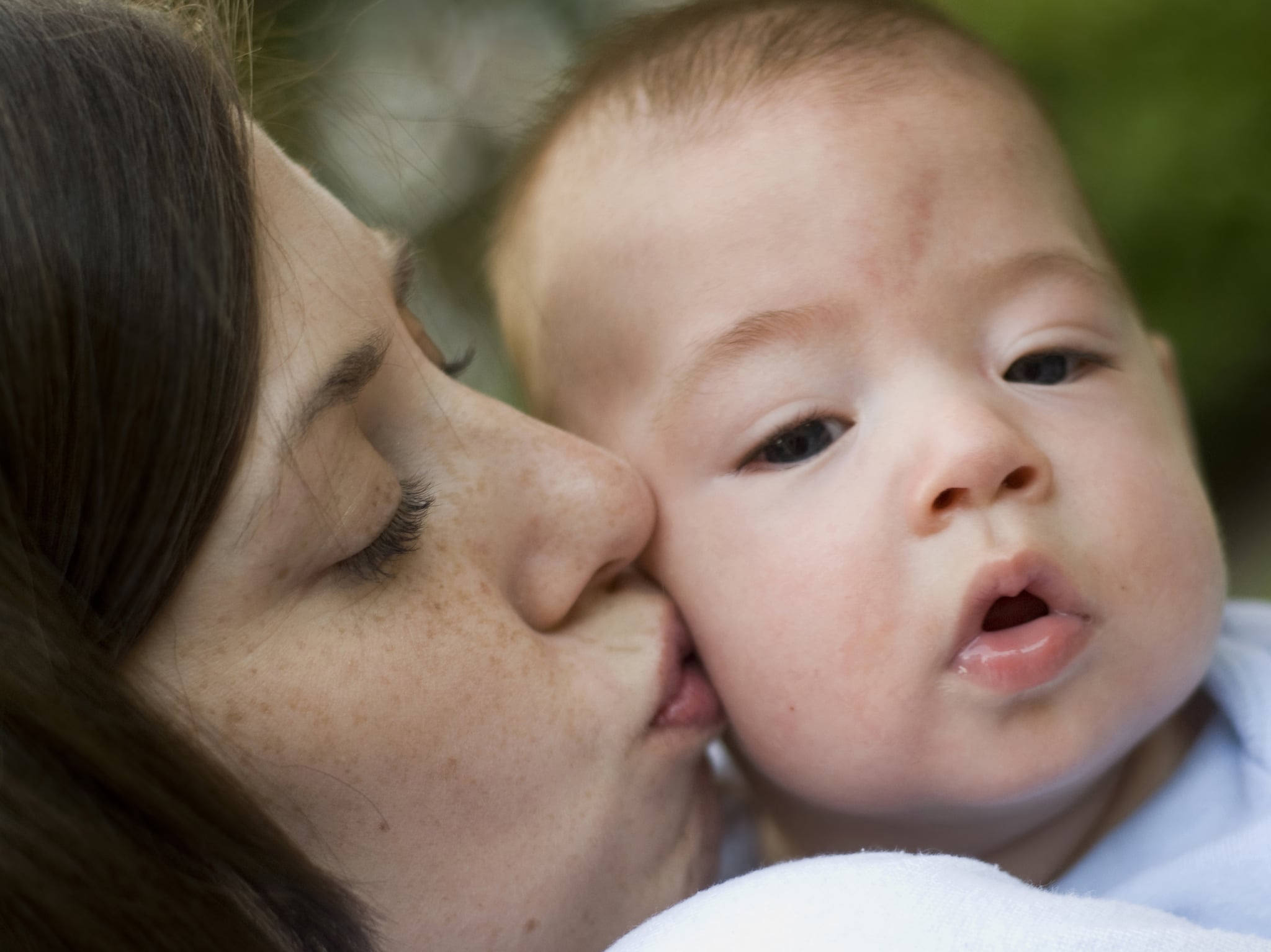What Is a Stork Bite?
What Is a Stork Bite? 2 Pediatricians Weigh In

One of the many, many things you may not know about until you're a new parent is the idea of "stork bites." The term refers to markings that may appear on a newborn baby's skin — usually the forehead, eyelids, and tip of the nose. They typically fade away by toddlerhood but can stick around longer. And while some new parents might be alarmed by the appearance of a stork bite, also called "salmon patches" or "angel kisses," they're typically not a cause for concern.
In fact, many parents learn to love stork bites, as the playful name might suggest. In May, Chrissy Teigen posted a photo of her child Esti with a stork bite visible on her forehead. The caption read, "still has the angel on her forehead 👼🏽."
Here, two pediatricians give us the 411 on stork bites, including what stork bites are, what causes them, when they normally fade, and when parents should be concerned.
What Is a Stork Bite?
A stork bite, salmon patch, or angel kiss is medically referred to as nevus simplex. They're basically a type of birthmark.
They look like pink or reddish patches and are often found "on the nape of a newborn's neck, often extending into the hairline, on the eyelids, [or] between the eyes," says Amanda Stovall, MD, an Illinois-based pediatrician.
Stork bites may be present at birth, but they can also emerge (or be noticed for the first time) a week or two after birth, says Justin Hoskins, MD, the founder and medical director of Priority Pediatrics and a pediatric emergency-room physician at Carle Foundation.
Estimates vary, but stork bites are common, with one 2012 study of almost 600 infants putting the frequency of nevus simplex at 83 percent. More conservative estimates indicate about one-third of babies have them.
What Causes Stork Bites?
Stork bites are the result of dilated blood vessels. That's why parents might notice that "stork bites often get redder in colour when a baby cries or is warm, making them more obvious," Dr. Stovall says. They'll also get less red when the baby cools down or off.
Dr. Hoskins says the precise reason some newborns get stork bites and others don't is unclear, but genetics may be a factor.
Do Stork Bites Go Away?
Generally, yes, though it may take some time. "Most stork bites fade and disappear over time without any treatment," Dr. Hoskins says. "The fading process varies, but they typically resolve by the age of 1 to 2 years," he says, adding, "In rare cases, some stork bites may persist into adulthood, particularly those on the neck. However, they often become less noticeable with age."
While new parents may wonder if they can do anything to speed up the fading process, experts recommend letting a stork bite run its course without intervention. Stork bites aren't a risk to your baby, and since they typically fade, there's no need to risk any sort of treatment.
If the mark persists, is in a spot where it's visible, and bothers your child, there are treatments down the road, such as laser therapy, according to a 2023 review in the Journal of the Dermatology Nurses' Association.
But even knowing stork bites are generally harmless, Dr. Hoskins and Dr. Stovall agree it's always best to bring up concerns, including skin redness, with a medical provider who can evaluate a child in person.
"If a birthmark becomes raised, changes significantly in colour or size, or causes discomfort, it is advisable to consult a pediatrician or dermatologist for evaluation and guidance," Dr. Hoskins says.






